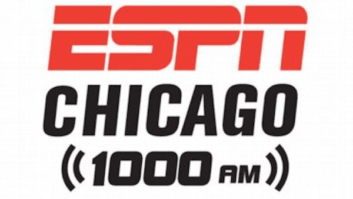Radio Engineer/Owner Evaluates Digital Radio At ‘Street Level’ in the Windy City
As a long-time Chicago radio engineer and air talent, and more recently the owner of a little kilowatter in southwestern Michigan, WGTO(AM) in Cassopolis, I have a vested interest in HD Radio. I must start by saying that I am not the biggest supporter of Ibiquity Digital.
The FCC process that granted the IBOC system as now implemented is, for me and many others, highly suspect to say the least; and the thought of perpetual license fees just irks me.
Not enough was done to study this system for the now-known interference issues before we got this far. The fact that HD Radio carriers extend past the permitted envelope for analog should have been a red flag that interference could be an issue. This is among the reasons other parts of the world rejected in-band digital in the first place.
We should have done more investigation of other systems or explored other ways to do digital, such as the Eureka-147 system used in Europe and Canada that uses different spectrum for digital and does not attempt to use the same spectrum now used by broadcast stations.
The FCC over-granted TV spectrum many years ago in the United States, assuming a much greater need for UHF TV. It later saw the error and fixed it by removing TV channels 70 through 83.
I am sure spectrum could have been found for new radio digital broadcasting if it had been a true priority. But some of us think politics may have had a hand in not going for new spectrum that would have leveled the playing field among all stations in a market; 500-watt AM stations would enjoy the same coverage and sound as 50 kW FM outlets.
I am enough of a realist to know that would not sit well with major multi-station owners who fear increased competition from the Ma and Pa stations still on the air. HD Radio as now set up preserves the coverage differences between more powerful stations and weaker ones in the same market.
But that notwithstanding, it looks like HD-R is here. I went out and purchased a Boston Acoustics Recepter Radio HD and tried it out in Chicago.
The radio itself has the typical light and flimsy feel of modern-day receivers that are more air than anything else. It powered up well and right away I was able to identify several Chicago FM stations using HD-R and some were utilizing the second digital outlet. The rat-tail antenna supplied showed a tendency to not allow easy digital lock. Using a cheap wire dipole was much more successful.
Listening in
There’s not much difference to the average listener over analog FM unless you’re plagued by some really bad intermod. Most of the stations using FM HD Radio in Chicago still use the same aggressive processing they do for the analog channel, so the hope of relaxed CD-style audio is just not a reality.
Some of this can be blamed on the need to match the analog and digital for blending in and out. The delay in having the digital come on was not really a bother to me as the analog was there right away. Most stations using the second digital channel had the good sense to back off the processing a bit. Since it was after sundown when I got home to play with this new radio, the AM stations had already shut off their HD Radio signal.
The next morning I got to play with the AM side.
Here is where some remarkable things are going on. WRLL(AM), a Clear Channel expanded-band oldies station at 1690 kHz that is diplexed on 1390 kHz over a directional array, had a very nice HD Radio sound.
The most noticeable thing is the dead quiet background – rather spooky for AM. The morning show features Chicago radio legend Larry Lujack, who uses a digital line from his home out in the western states someplace. With analog, both he and local host Tommy Edwards sounded about the same.
On HD-R you can tell the difference between the local and the remote audio. The digital audio is so good that you can hear the slight degradation of the remote feed coming into the station studio from Larry Lujack vs. local jock Tommy Edwards, who is in the studio – a testimony to the clarity achieved with HD Radio.
The AM-side audio response on the Recepter in digital sounded about the same as a GE SuperRadio in city-grade contour, which ain’t bad. Clear Channel-owned 1390 kHz WGRB, playing gospel, sounded overly processed on the digital side but such a sound seems to be the norm for gospel formats.
CBS station WBBM at 780 kHz was not exactly on its game during my test. The digital audio was a bit torn, thin and overly sharp while the analog side seemed to have a bass boost going.
CBS’ WSCR at 670 kHz was much better. The HD Radio was easy to listen to and reminded me of listening to the program line. But the digital and analog were out of sync and each time the radio had to re-lock on the digital, which was often, I had to hear the last few seconds of analog repeated.
To my surprise, the ABC/Disney stations like WLS(AM) were not in HD Radio.
Can you hear me now?
One of the questions that recurs in HD Radio discussions is the usable range of the digital signal. What I found surprised me.
WTMJ at 620 kHz in Milwaukee, about 100 miles north, has a readable signal over most of Chicago but there was substantial hiss and noise, especially on the south side of Chicago where I live. You know very well you are not listening to a local station.
I played with the external loop that comes with the radio and was able to get enough signal for the Recepter to switch and lock onto digital. Now that was a heck of a contrast!
I could not detect the reverb the station uses on the analog signal with all the noise, but on the digital it was perfectly clear, clean and the reverb was there, even though the analog signal was a lot less than optimum. So in this case, the digital signal provided reception in excess of the primary analog pattern.
The Recepter is a decent radio albeit rather pricey, but it’s not going to go down as a super box. It did have a fault during my test.
For some reason it started sounding like a bad CD, chattering on every HD station I tried to tune in. Like a computer, I did a hard reboot by pulling and reinserting the power plug and it was okay.
Will the public buy this radio for HD Radio? I would not think they will run to grab them unless they are AM buffs who want to hear the dramatic difference, and see the display work like FM with song titles and artist. For the FM listener, there is just not that much difference, especially to pay $300 for.
The second channels often duplicate a format already available on another station. Then there is that pesky “no nighttime AM HD Radio” issue. I do not think the public will stand for it any more than they would if color TV had been given restricted hours of operation.
My little AM station is still running C-Quam Stereo but alas, I realize the handwriting is on the wall. I am curious as to how we will solve the nighttime HD-R situation. The truth is that allowing a digital service that cannot function at night seems contrary to the stated claim by proponents that AM and FM would be on the same level playing field.
Not only does FM get new channels with HD Radio, they get to do them 24/7. Once again AM is the stepchild. Is the only answer the total demise of analog, as TV will do by 2009, for a 100 percent digital signal?
Leonard Kahn says he has a day- and night-compatible system with Cam-D but I think the Ibiquity train has left the station. One thought is allowing AM stations that transmit virtually no night skywave, such as a Class D at low-power and post sunset, to keep HD-R on at night. But that would do nothing for the 50-gallon operations.
Personally, I will look for an HD Radio for my Ford Crown Victoria. The service has promise if the issues that present themselves are worked out.
What is your experience with HD Radio in your market? RW welcomes other points of view to [email protected].












